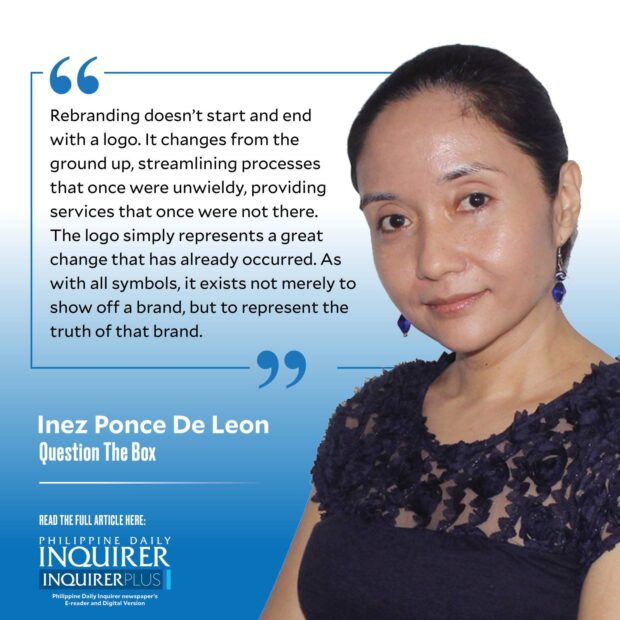Removing the mask of rebranding
Last week, I sat at a meeting in Ateneo’s Rizal Library. My colleagues and I discussed a coming photo exhibit, which would show, among others, the spontaneity, temporality, and creativity of living in Metro Manila.
After the meeting, the university librarian and I fell into a conversation about the library itself. The physical structure occupies several buildings on campus, but while it is a behemoth, it is not a monolith. It changes its face a few times a year: The fountains sometimes run different colors of water for a specific protest or feast; the walls feature newspapers from the time of martial law, to remind the students that no matter how much the era has been romanticized, they should cling to their principles and never allow history to be repeated.
It was the library steps that we turned our attention to. People always climb them, but very few realize that they are stepping on the shoulders of giants. Decorating each step, as though to show the spines of books, are titles from a variety of writers. In another building on campus, the steps were once decorated with the names of the victims of martial law and extrajudicial killings, all to spell “Never Again” when viewed from afar.
These are little details, hidden in plain sight; but they, too, speak to our creativity in an urban space. We embed our identities in the places we live and work, the same way that a mother might decorate the house with her children’s diplomas, even if she did not finish school herself; or a father might build a third or fourth floor atop an existing structure, to keep the family safe from floods; or an enterprising sibling might convert the lower part of the house into a “sari-sari” store, to earn income from the extra space.
It is these gems that pervade our daily lives, and they are not deliberately hidden from us. Rather, they are in places that we do not think to look, simply because we have been so used to seeing them: the steps in a stairwell, the multiple structures that dot our landscape, the many stores we pass on our daily commute.
And yet it is these little gems that define who we are: cognizant of our history, even if we are often labeled as a forgetful people; responsive to our environment, even as we are sometimes framed as uncaring of natural hazards; planning our futures financially, even as we are sometimes said to be unwise with money.
There, too, are little details in our daily lives that we miss—not deliberately, but because they have been part of our world for so long, they sometimes cease to be marvels or scandals. Government offices riddled with bureaucracy, with layers so thick and many no one would dare navigate them without forking over extra cash. Government agencies with grand plans, but no real implementation; or implementation in their first year, fizzling out with changes in leadership. Government services so basic, we forget that we actually have a right to them as citizens: water, electricity, sanitation, health, education, food security, urban planning.
It is these little details that we should not miss because they are the truth. No amount of rebranding will hide inefficiency in a corruption-ridden government office. No new logo will make an agency do its work better. No new slogan will yield better services.
Rebranding doesn’t start and end with a logo. It changes from the ground up, streamlining processes that once were unwieldy, providing services that once were not there. The logo simply represents a great change that has already occurred. As with all symbols, it exists not merely to show off a brand, but to represent the truth of that brand.
And as with all symbols, we cannot simply stare at a logo and be dumbfounded. We need to look at the things still there, hidden in plain sight, that define the identity of that which the logo purports to represent. Is there really good governance? Stable agriculture? A strong economy? Tangible efforts at getting there?
The details that we miss are often those that are so embedded in our daily life, they have become constants. What else is a constant, but a true identity that we should not ignore?
Constants survive, even with changes in logos and rebranding. Without real action on real issues by real experts, rebranding is simply putting makeup on a corpse.





















